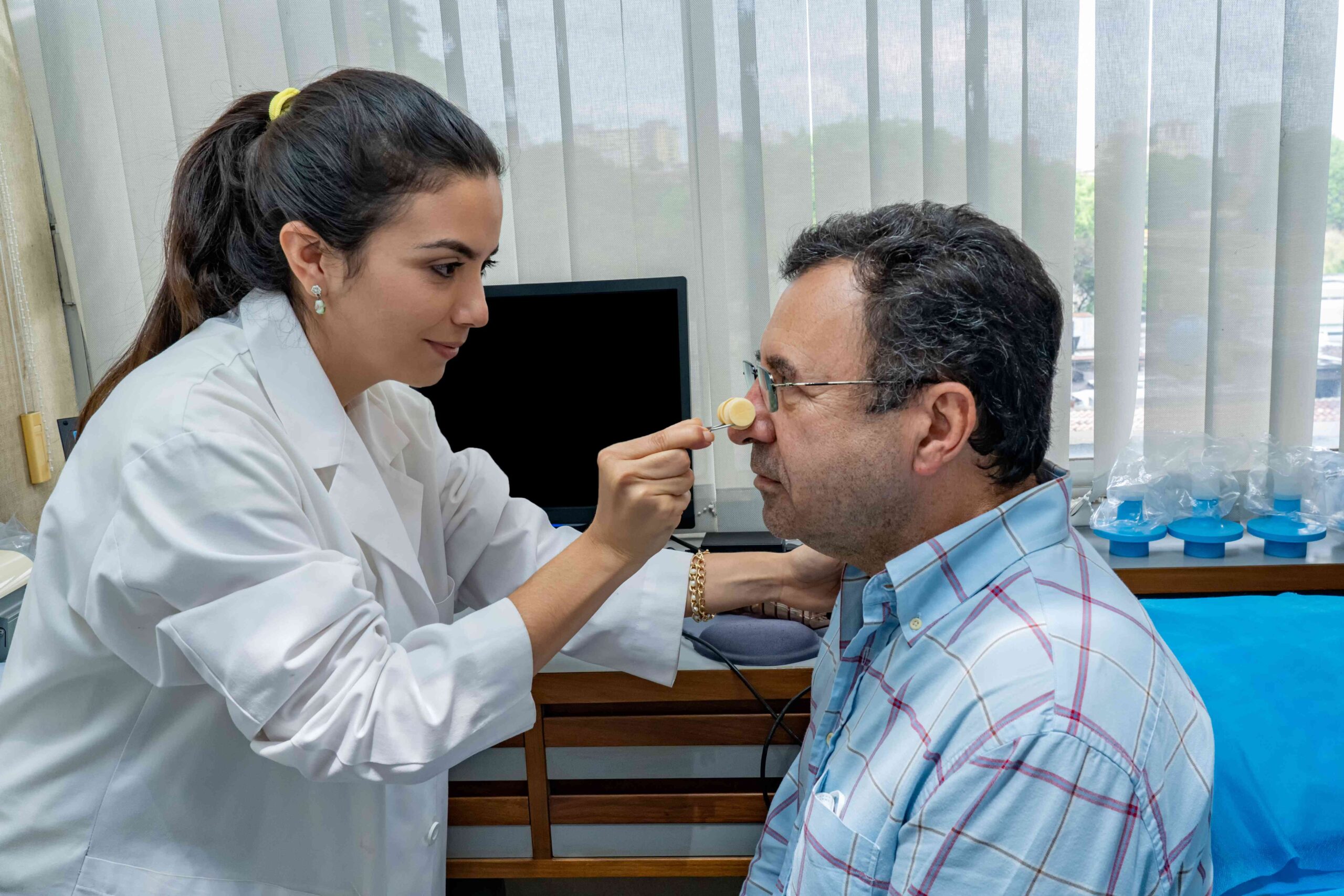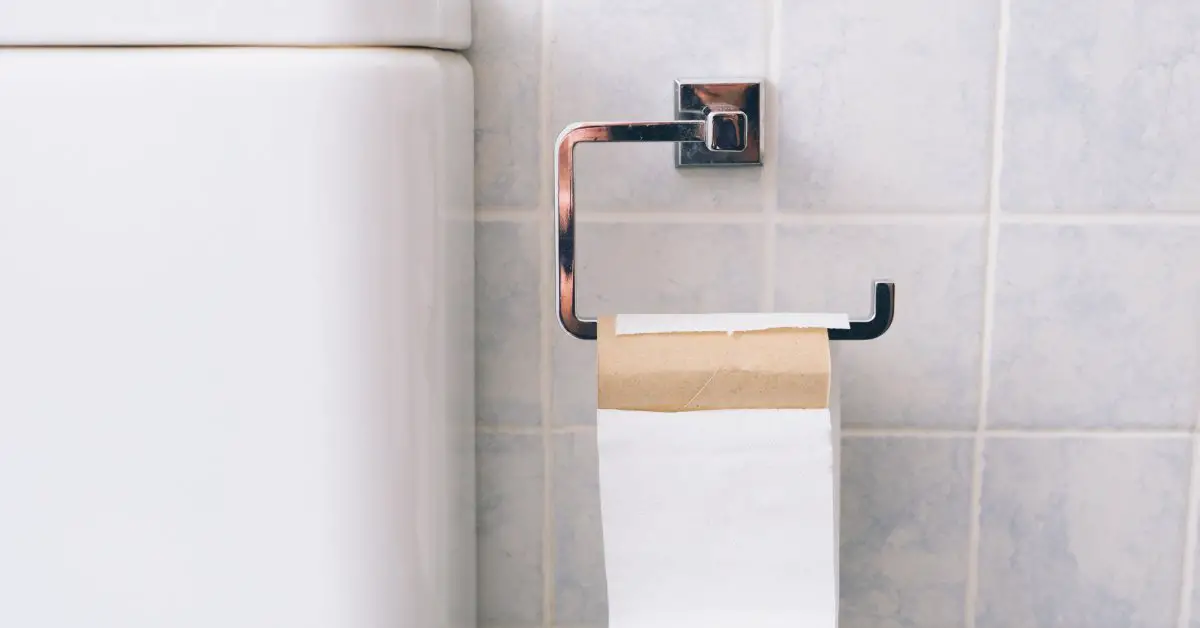
:max_bytes(150000):strip_icc():format(jpeg)/Health-GettyImages-1325753617-de1b077e5c314db895078c8555ec0642.jpg)
A pulmonary function test (PFT), or lung function test, is a non-invasive test that measures how well your lungs work. Several types of PFTs measure various aspects of lung function, including how well you move air in and out of your lungs, how much air your lungs can hold, and how well your lungs absorb oxygen and move it into your bloodstream.
Healthcare providers order pulmonary function tests to help diagnose and monitor lung conditions. Pulmonary function technicians (respiratory therapists who specialize in diagnostic testing) perform PFTs to help pulmonologists (doctors who specialize in respiratory conditions) diagnose and treat respiratory disorders and lung conditions.
Pulmonary function tests are important for diagnosing and managing respiratory conditions that affect your lungs and/or airways, such as asthma and chronic obstructive pulmonary disease, or COPD (a group of chronic, progressive lung diseases that limit airflow to the lungs and cause difficulty breathing). Healthcare providers use PFTs to:
- Diagnose lung conditions, such as COPD, asthma, emphysema (a form of COPD characterized by damage to the lungs’ air sacs, or alveoli), and pulmonary fibrosis (scarred and damaged lung tissue)
- Monitor existing respiratory conditions and lung diseases to assess the effectiveness of treatment and guide treatment plans
- Assess lung function before surgery or other medical procedures, especially in people with lung or heart problems or smokers, to determine their ability to tolerate the procedure
- Assess lung function in people exposed to hazards like dust or chemical fumes at work or home to detect signs of lung or airway damage
Your healthcare provider may order one or more PFTs if you experience symptoms such as:
- Shortness of breath
- Coughing
- Wheezing (whistling sounds when breathing)
- Chest tightness or discomfort
- Difficulty taking deep breaths
Healthcare providers also order PFTs if you:
- Have a lung condition or another condition that can damage your lungs (e.g., scleroderma—an autoimmune disorder that causes tissue to thicken)
- Were exposed to dust, fumes, or other substances that can cause lung damage (e.g., radiation, asbestos)
- Are scheduled to have surgery
- Had a chest X-ray with abnormal results (e.g., fluid around the lungs, lung tissue scarring)
- Take medication to treat a chronic respiratory condition (e.g., asthma), and your healthcare provider wants to determine if the medicine is effective
PFT results provide insights into various aspects of lung function, including:
- Lung volume: The amount of air your lungs can hold
- Airflow: How much and how quickly you exhale air
- Gas exchange: How efficiently your lungs absorb oxygen and move it into your bloodstream
PFT test results are compared to standard reference values based on age, sex, and height.
There are many types of pulmonary function tests. Each test measures different aspects of lung function to help healthcare providers assess lung function. Your healthcare provider will consider your symptoms to determine which tests to order.
Spirometry
Spirometry measures lung volume—how much and how quickly you can blow air out of your lungs. The spirometer measures and records your test results, which include:
- Forced vital capacity (FVC): How much air you can forcibly and fully expel from your lungs after taking a deep breath
- Forced expiratory volume – 1 second (FEV1): How much air you can forcibly expel from your lungs in one second immediately after taking a deep breath
Lung Plethysmography
Lung plethysmography measures the amount of air in your lungs after inhaling and exhaling. Unlike spirometry, which measures how much air you can exhale, lung plethysmography measures how much air you can hold in your lungs. It helps healthcare providers identify lung damage or decreased ability of your lungs to expand as you inhale. Lung plethysmography measures:
- Total lung capacity (TLC): How much air your lungs can hold after taking as deep a breath as possible
- Residual volume (RV): How much air remains in your lungs after forcefully exhaling
- Functional residual capacity (FRC): How much air remains in your lungs after exhaling normally
Lung Diffusion Test
A lung diffusion test assesses how efficiently oxygen transfers from your lungs into your bloodstream. This involves inhaling a low-concentration carbon monoxide and a tracer gas (e.g., helium), holding your breath for 10 seconds, and rapidly exhaling into a mouthpiece.
The amount of tracer gas in the air you breathe out tells healthcare providers how efficiently your lungs exchange oxygen and carbon dioxide.
Pulmonary function tests are non-invasive, meaning they are usually quick, pain-free, and safe for most people. Knowing what to expect can help you prepare and ensure your test goes smoothly. There are different procedures for each type of PFT, but they are all relatively straightforward and involve following simple instructions to ensure your test results are accurate.
Before the Test
Before you have any pulmonary function test, your healthcare provider may ask you to:
- Avoid smoking for six hours before the test
- Avoid eating a large meal at least two hours before the test
- Avoid intense exercise at least 30 minutes before the test
- Wear loose-fitting clothing that allows you to breathe comfortably
Talk to your healthcare provider about your medicines, especially for treating breathing problems, such as a bronchodilator (medicine that opens your airways). They may ask you to stop taking the medication for a certain period (e.g., six hours) leading up to your PFT.
During the Test: Spirometry
When you arrive for a spirometry test, the technician performing the test will give you verbal instructions on the steps you will take throughout the process. A full pulmonary function test takes about 30-45 minutes, but a spirometry test takes only about 10 minutes. It involves the following:
- You will sit comfortably with a nose clip placed on your nose to ensure you breathe through your mouth.
- You will wrap your lips around a mouthpiece connected to a spirometry machine.
- The healthcare provider will ask you to breathe as deeply as possible and blow out as quickly and hard as possible. This step is repeated at least three times to ensure accurate results.
The technician may give you medicine to open your airways and repeat the test to see if the medicine improves your breathing. If you feel dizzy or lightheaded at any point during the test, stop blowing into the mouthpiece and tell the technician.
During the Test: Lung Plethysmography
A lung plethysmography test involves breathing normally and rapidly while sitting in a special airtight cabin with clear walls (similar to a telephone booth).
It can also be done via a nitrogen washout method, which doesn’t involve the clear box. Plethysmography is more accurate, but some people might not be able to physically be inside the box or may feel claustrophobic.
The test is painless, though you may sometimes feel lightheaded or short of breath. The test takes approximately 15 minutes and involves the following:
- You’ll wear a soft clip on your nose to close off your nostrils and encourage breathing through your mouth.
- You’ll place your lips over a mouthpiece in open and closed positions throughout the test.
- The technician will ask you to breathe normally and take short, shallow breaths (pant) throughout the test.
- As you breathe and your chest moves, the pressure and amount of air in the room change. These changes help measure the amount of air in your lungs.
Talk to your healthcare provider if you have difficulty in closed spaces. The airtight cabin has clear walls so you and the technician can see each other throughout the test.
During the Test: Lung Diffusion Test
A lung diffusion test takes about 5-10 minutes and involves the following:
- You’ll sit comfortably with a soft clip placed on your nose to close off your nostrils.
- You’ll wrap your lips around a mouthpiece connected to a machine (spirometer).
- The technician will ask you to exhale and empty your lungs as much as possible.
- You’ll take a quick, deep breath to inhale a low-concentration tracer gas and hold your breath for 10 seconds.
- You’ll exhale, and the machine will measure the amount of carbon dioxide in the air that you exhale. This shows how much gas your lungs absorb and move into your blood.
After the Test
Pulmonary function tests are outpatient, meaning you can leave the testing facility after the test. You can resume your normal activities immediately afterward, though you may feel tired after putting extra effort into breathing during the test. Coughing after pulmonary function tests is also common.
Pulmonary function tests (PFTs) are generally considered safe and have few risks. You may feel slight dizziness, lightheadedness, or shortness of breath during certain breathing maneuvers (e.g., rapid, shallow breathing) during the test, which should resolve quickly after the test.
You should not undergo a pulmonary function test if you:
- Had a recent heart attack
- Have certain types of heart disease
- Experienced a pneumothorax (collapsed lung) recently
Most pulmonary function tests occur in a hospital or clinic’s pulmonary function lab, with healthcare providers specializing in performing PFTs. Your healthcare provider will instruct you on what to wear, eat, drink, and avoid on your test day. This may include:
- Clothing: Wear comfortable, loose-fitting clothing that allows for deep breaths and doesn’t restrict your chest or abdomen. If you wear dentures, wear them to the test to help you hold the mouthpiece in place throughout the test.
- Food and drink: Avoid heavy meals for two hours before the test, as a full stomach can affect how deeply you can breathe. Do not drink alcohol or consume caffeinated foods or beverages (e.g., soda, coffee, tea, chocolate) in the hours leading up to the test.
- Smoking: If you smoke, your healthcare provider will ask you to refrain from smoking six hours before the test.
- Medications: Inform your healthcare provider about all medications you take. They may ask you to avoid taking some medications (e.g., bronchodilators that open your airways) for a specific period before the test.
Preparing for your PFT before your appointment can help ensure your experience goes smoothly. Here’s what to consider:
- Insurance coverage: If you have health insurance, your plan may provide full or partial coverage of the cost of your PFT if a healthcare provider says it’s medically necessary. Check with your insurance company beforehand to understand your plan’s coverage and potential out-of-pocket (OOP) costs.
- What to bring: Bring your photo identification (e.g., driver’s license), insurance card, and any referral or requisition forms required. Ask your healthcare provider beforehand if you need to bring your medical records, previous test results, or a list of medications to your appointment.
- Support person: Depending on the testing facility’s policy, you should be able to bring a family member or a friend for support before and after your test. Your support person may need to sit in the waiting room during your test, as some facilities do not allow additional people in the testing room.
- Ask questions: Don’t hesitate to ask your healthcare provider or the technician performing the test about any concerns you have before and during the test.
If you have a respiratory illness like a cold or flu, call the test center and ask if you need to reschedule your appointment.
After the PFT is complete, the technician will send the recorded data from your test and send it to your healthcare provider for interpretation. The timeframe for receiving your results can vary depending on the facility, though you should have them within a few days.
Interpreting the Results
To determine whether you have a lung disease, your healthcare provider will compare your PFT results to established reference values for your age, sex, and height. This means your provider compares your test results to normal results from healthy people who are the same age, height, and sex as you. Normal pulmonary function tests fall within a certain range from the mean (average) based on those factors.
Your healthcare provider will call or schedule a follow-up appointment to share your test results and discuss what they mean. Abnormal PFT results may mean you have a lung disease. Lung function tests cannot diagnose a specific condition, but they can tell which of the two main types you may have.
Obstructive lung conditions cause your airways to narrow, making it harder for air to leave your lungs. They include:
- Asthma
- Bronchitis (inflammation of the inner mucus lining of the bronchial tubes in your lungs)
- Chronic obstructive pulmonary disease (COPD)
- Emphysema
Restrictive lung conditions limit how much air your lungs can take in and hold. They include:
- Pulmonary fibrosis
- Interstitial lung disease (a group of conditions that cause lung inflammation and/or scarring)
- Sarcoidosis (an autoimmune disease that causes lumps of inflamed tissue to form within organs)
- Scleroderma
Pulmonary function tests (PFTs) are non-invasive tests that measure various aspects of lung function. Healthcare providers order PFTs to diagnose and manage respiratory conditions like asthma, COPD, and interstitial lung disease.
Different PFTs, including spirometry, lung plethysmography, and lung diffusion tests, provide valuable insights into your lung health and help healthcare providers diagnose and manage lung conditions like asthma, COPD, and interstitial lung disease.
PFT tests are generally well-tolerated with minimal risks. You may feel tired or cough during or after the test or cough, but most people can resume their normal activities after a PFT. Understanding what to expect before, during, and after the test can help you feel prepared and at ease.
Talk to your healthcare provider if you have concerns about your lung health or questions about PFT testing or your results.








